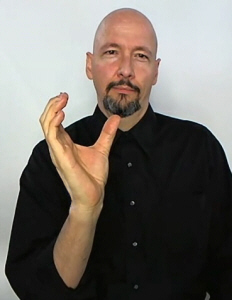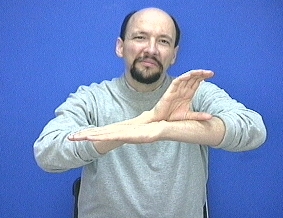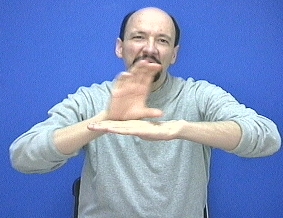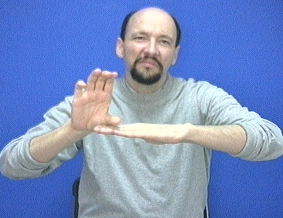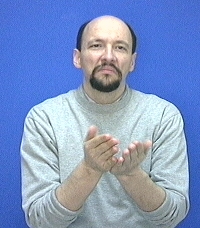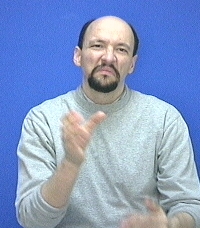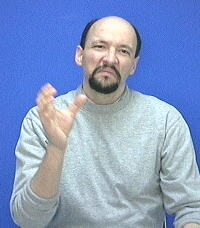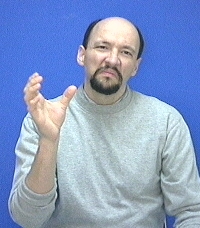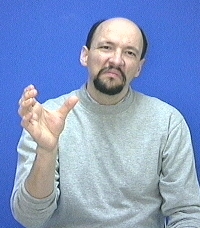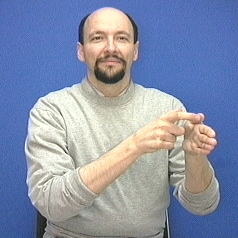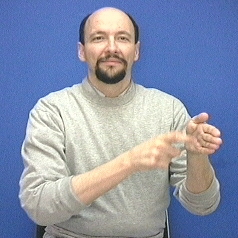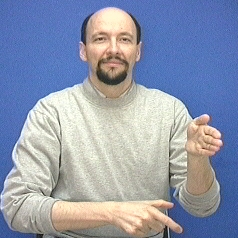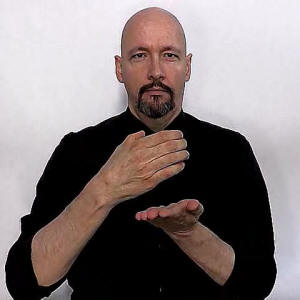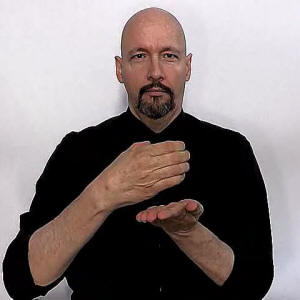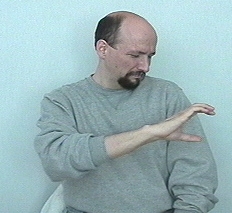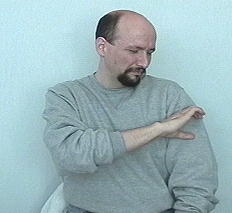American Sign Language: "Classifer: C" (CL:C)
For an explanation of "classifiers" in general, see: CLASSIFIERS
Note: as you study classifiers on some of these pages I have included signs which evolved from classifiers but are so now so common and standard that they are considered just regular signs.
Note: Quite often "Classifier: C" will be used with the mouth morpheme "CHA" (which means that you might see people's mouths move as if they were saying "Cha!" while doing the sign.
The "C" hand shape can be used to show objects that are classified as "round and/or cylindrical" (as in a pole). "Classifier C" can also be used to show thickness (such as a "thick" book or a layer of snow).
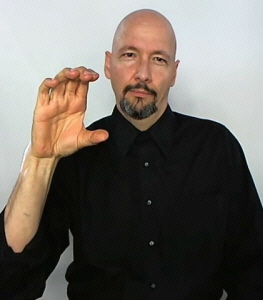
Example of usage of a "Classifier C":
THICK LAYER:
THICK-CRUST: In context you can use a CL:C to indicate that the crust on a pizza is a "thick" crust.
Sample sentence: "Which do you prefer, thick or thin crust pizza?" = "PIZZA THIN-[crust], THICK-[crust], WHICH FAVORITE-[prefer] YOU?"
THICK-BOOK:
First you establish that you are talking about a book, then you indicate that it is "thick."
"ARTICLE" or "COLUMN"
You can use a CL:C or a modified version that just uses the index finger and the thumb to indicate an "article" or "column" -- as in, "a newspaper column."
I use a "partial C" handshape, but you could also use a regular "C" handshape. When I do it with a regular "C" handshape, I am generally referring to a "chapter" -- as in "a chapter in a book."
Note: Unless you modify the size or length of the movement, the sign "ARTICLE" is not a classifier. Over time it has become standardized (lexicalized) and is now just a regular sign. But suppose I started the sign a little higher, exaggerated the movement, and brought the dominant hand "way down" to show a "long article." In that circumstance, it would be a classifier.
The generic sign for CUP is not a classifier.
But if I use a "C" handshape to show three different cups then you could start making the argument that I am now using a "classifier C" rather than just doing the sign for "CUP." This would be especially true if my non-dominant hand were to be turned downward (as if representing a table or shelf) instead of upward.
BRUISE:
You can show the location of a bruise.
Also see: CLASSIFIERS
Also see: THICK
You can learn
American Sign Language (ASL) online at
American Sign Language University ™
Lifeprint.com © Dr. William Vicars
